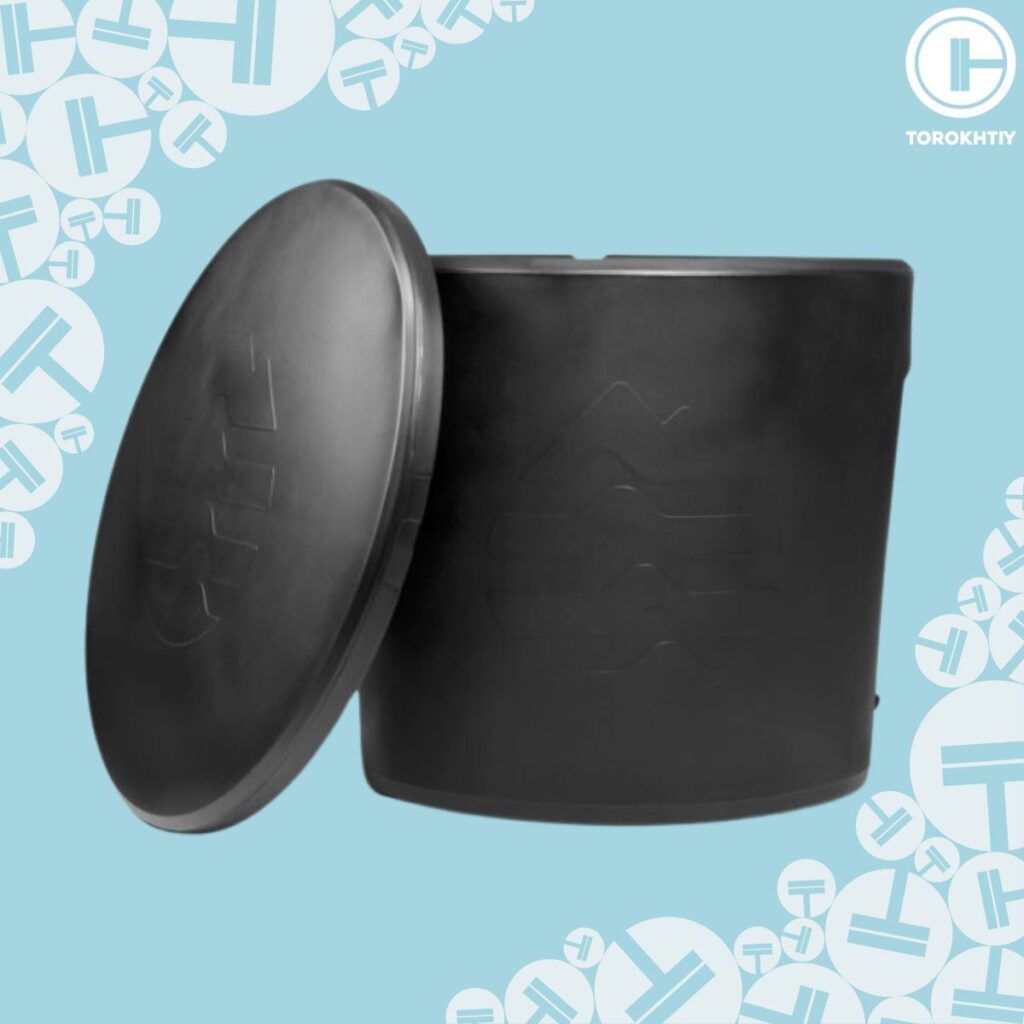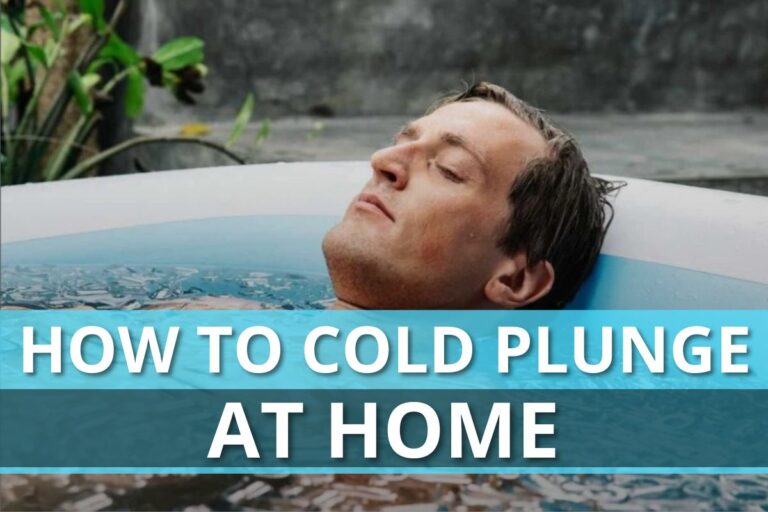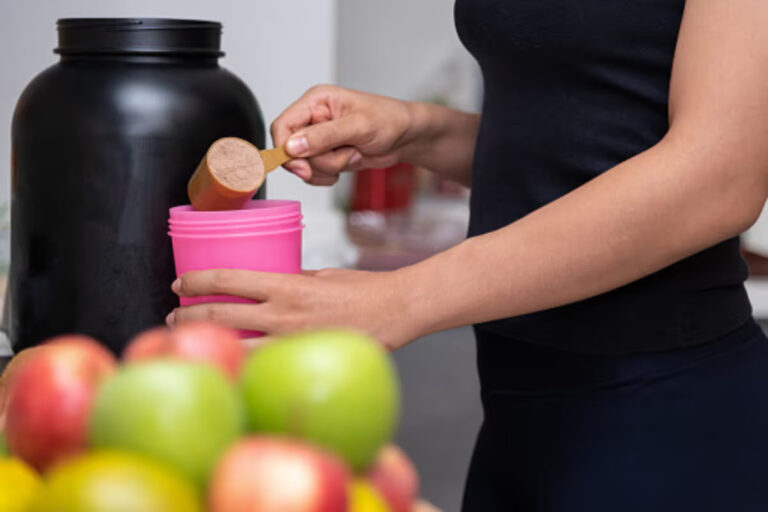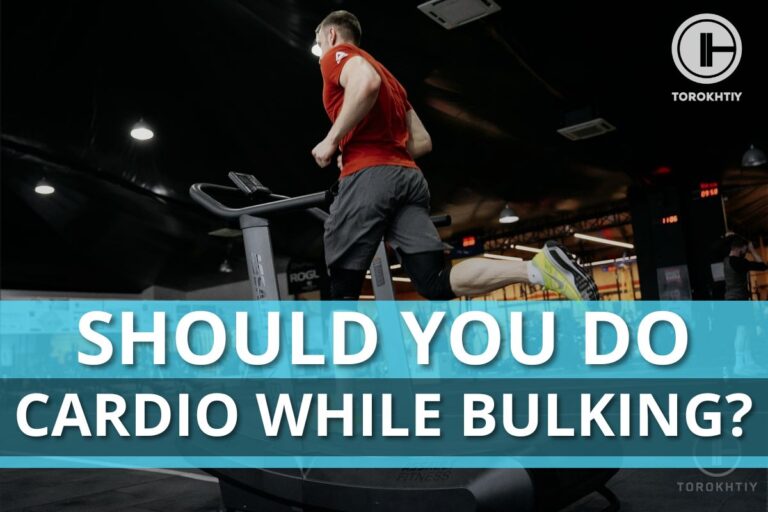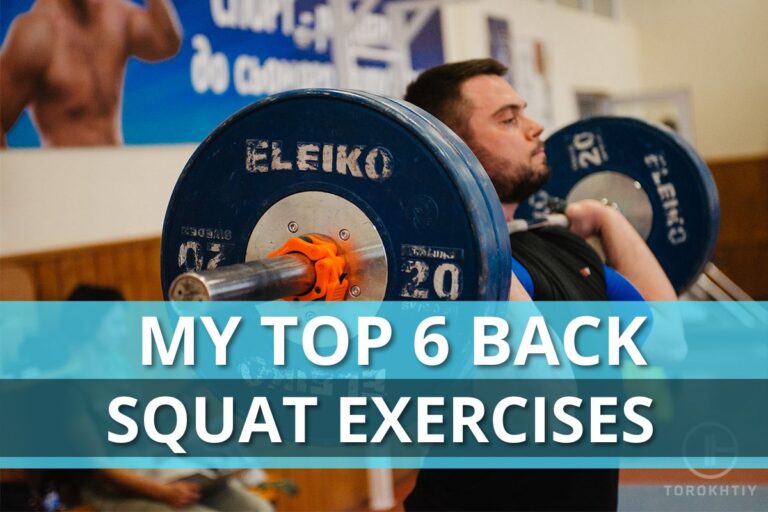When to Take an Ice Bath: Timing for Optimal Recovery
What’s the first thing you think of when it comes to recovery and wellness? It’s probably not when to take an ice bath, right? You might know about the benefits that taking an ice bath has, but did you know timing makes all the difference?
See, this isn’t just about getting cold; it’s about timing the cold right. Ice baths have a bunch of benefits; however, if you don’t time them right, not only will you not be getting all of the good stuff you’re after, but you can also ruin progress you made during your workout. Timing your ice bath plays an important role in the adaptation you are looking for.
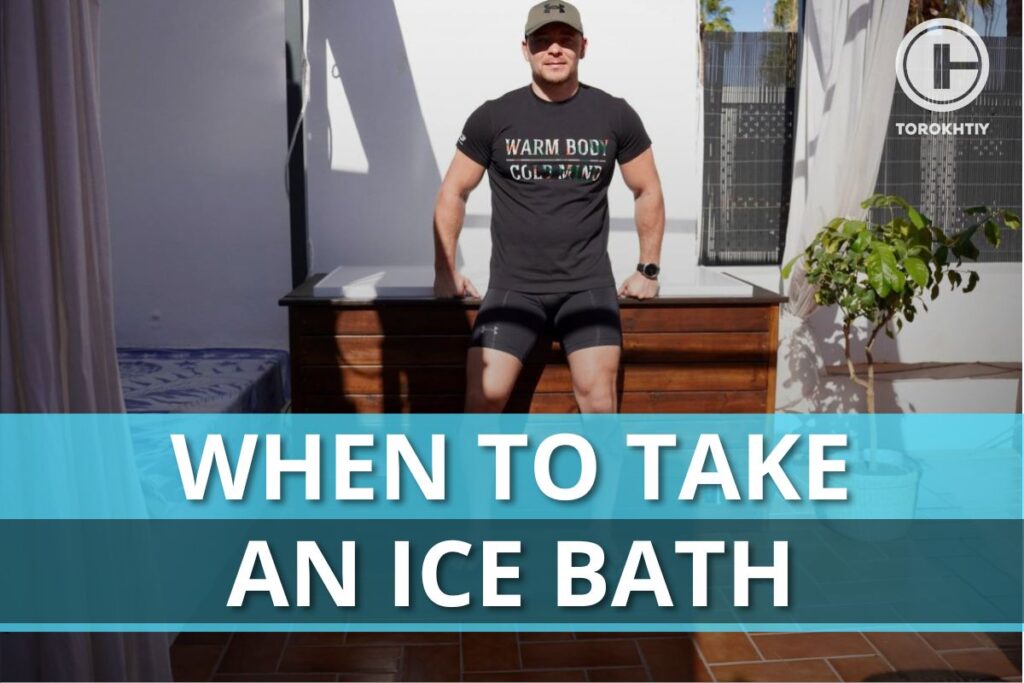
When to take an ice bath? Generally, the best time to take an ice bath is not within the first 4-6 hours after working out if your goal is building muscle mass. This will allow your body to naturally start the recovery process before introducing cold therapy.
Let’s see how to get cold the right way and when is the best time for an ice bath!
What Is Ice Bathing?
Ice bathing means you fill a tub with some cold water, add a bunch of ice to it if needed, and then you sit in it for 1-60 minutes (depending on the exposure type). Sounds appealing?
Probably not but being comfortable and relaxed is not the point of an ice bath. In fact, it’s the opposite – the discomfort of exposing your body to cold temperatures triggers various physiological responses that can reduce inflammation, help soothe sore muscles, and promote recovery through constricting blood vessels.
| Exposure | Duration | Temperature | Frequency |
|---|---|---|---|
| Brief Dip | 1-3 min | 1-9°C (33.8-48.2°F) | daily (if desired); 11 mins/week is a good benchmark |
| Long Dip | 30-60 min | ∼15°C (∼59°F) | 2-3 times per week |
The shock you get from the cold water can also stimulate the release of endorphins, which are natural mood boosters. There are a lot of scientific studies that confirm the effectiveness of ice baths, but it’s very important to approach them carefully and speak to a doctor first.
Not everyone is suitable for such an extreme kind of therapy as an ice bath, especially those with a heart condition.
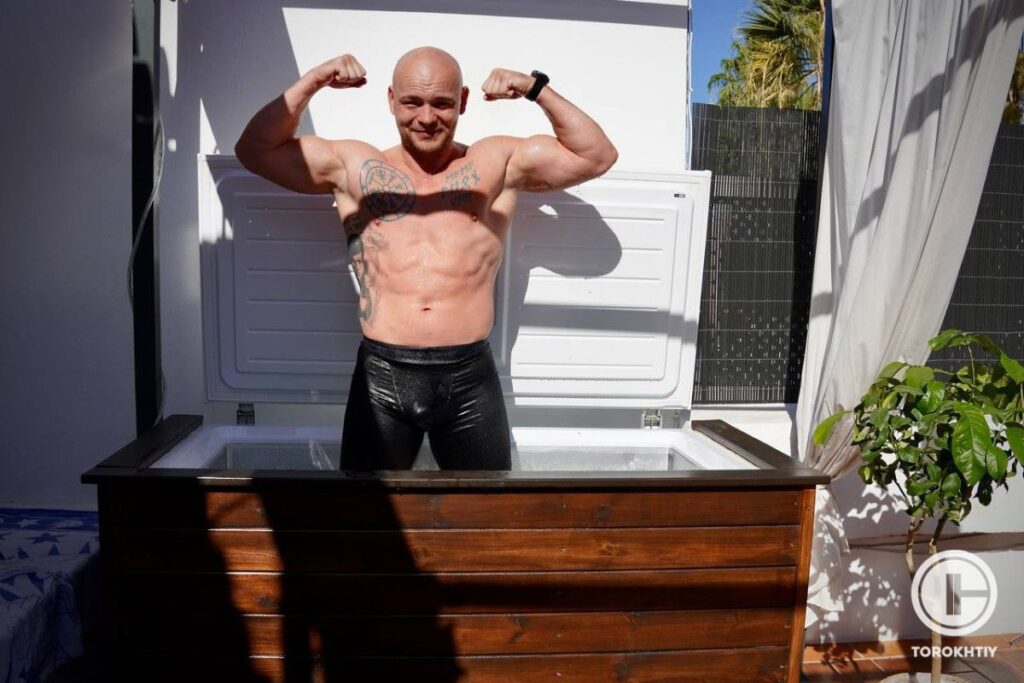
When It’s Better Not to Take an Ice Bath, And When It’s Better to Take an Ice Bathe?
You know that saying, “Timing is everything”? It’s not true for absolutely every aspect of life, of course, but in most cases, the right timing can make a difference between success and failure. This is certainly the case with ice baths, so let’s check out when should you take an ice bath and when it’s better to stay warm and cozy.
1. After Working Out
It can be tempting to hop into an ice bath immediately after working out, but that can be a good idea only in specific situations, like multiple fights or events in a day etc, or when reducing inflammation is important.
You should refrain from ice bathing within the first ~4 hours of completing your workout specifically if your goal is to build muscles, because during this time, your body goes through a natural inflammatory response that’s very important for muscle repair and adaptation.
If you take an ice bath during this period, the cold will interfere with these processes and put a damper on all the benefits you would’ve gotten from exercising.
2. Muscle Stiffness Relief
Ice baths can be super helpful for muscle soreness and stiffness because the cold water will constrict the blood vessels and reduce inflammation, which can be a source of relief. You should take an ice bath within 24-48 hours of an intense workout or a strenuous physical activity. The good idea is to take it the next day in the morning, and you can do it every day if you want.
3. Mental Health Improvement
Ice bathing can contribute to a positive mental state, because the sudden drop in temperature sends a high number of electrical impulses from peripheral nerve endings to the brain, and the ice bath has a significant analgesic effect.
Both of these could help deal with depression. Ice bathing could also benefit a person if performed in the first half of the day. This is because the sudden cold helps create a dopamine surge that provides you with a “wake-up” effect (an alternative way of starting your day as opposed to relying on coffee).
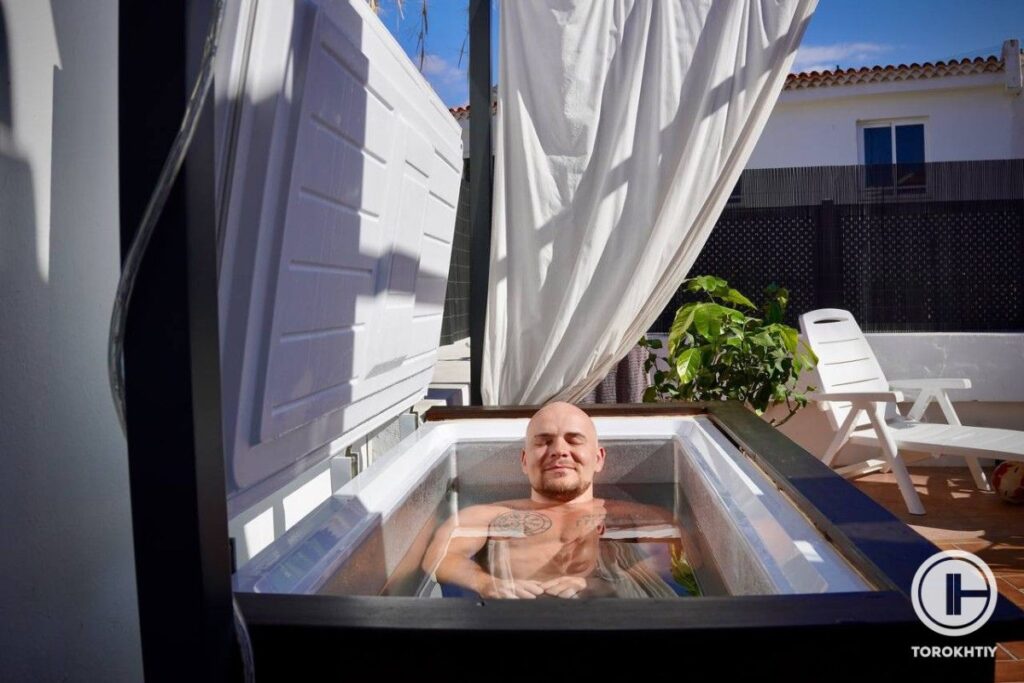
4. Before and On Rest Days
Rest days are very important and an ice bath the day before or on the rest day can be very beneficial. Cold water can be a preemptive way to manage the soreness in your muscles and improve recovery in general during downtime.
5. Managing Chronic Inflammation
Using ice baths to manage chronic inflammation (like certain autoimmune conditions) hasn’t been established yet – it may work in some cases; but when it comes to managing chronic inflammation, it is safest to consult with your healthcare provider for professional advice.
6. Endurance Events
If you have an endurance event coming up, it might not be the best approach to take an ice bath right before it. Constricted blood vessels and the drop in muscle temperature could make it hard for your body to adapt and respond to prolonged physical demands of endurance activities.
With that being said, there have been some studies that have shown the positive effects of ice baths prior to endurance training especially in hot conditions (as a pre-cooling protocol). However, because of the low number of participants in all of the studies, it is hard to draw some definitive conclusions.
7. Injury Acute Phase
Don’t take an ice bath within the first 48 hours following any kind of physical trauma. At this stage, the best thing is rest, elevation, and compression – all of this will manage the inflammation much better than an ice bath could and it will support the initial healing processes.
When it comes to the healing of injuries, it is best to consult with a professional (doctor or a physiotherapist, especially one who trains) to get proper advice.
How Often Should You Ice Bathe?
The timing is important, but how often should you ice bath? How many ice baths a week do you need, or is even once a week too much?
The answer is different for everyone, so it depends on personal preference, fitness goals, and overall health. It also depends on the protocol you’re using (brief exposure/dip, or long exposure/dip). You need a balanced approach, and you should not go too far with ice bathing, or you will end up causing issues instead of enjoying the benefits.
If you take ice baths at inappropriate times, you can for example suppress your body’s natural response to inflammation, which is a key element in the recovery process. That is why timing is imperative. It is critical to tailor the timing of your ice baths based on your body’s needs and what you want from an ice bath.
When it comes to frequency, it is good to include 1-3 ice baths into your routine, with rest days in between (you can do ice baths on rest days as well). For brief exposures, aim to do 1-3 min/1-9°C dips. You can do these daily.
For long exposure, aim for 30-60min/around 15°C. Remember that it is always better to start slow and then add some, than start high, do too much and suffer the consequences. Start doing long exposure dips for 1-2 times per week and see how you will react.
With a brief one, studies say that 11 min of total cold exposure in a week is a good benchmark.
Keep in mind, we all respond differently to ice baths. Factors such as intensity of physical activity, individual tolerance to cold exposure, and overall state of health play a huge role in determining the optimal frequency. Some people might benefit from frequent ice baths, others need to keep it to once a week.
The best routine and the optimal ice bath frequency depend on your body’s response, so monitor it. Observe how your body reacts to each session and adjust the amount of ice baths accordingly.
Any signs of excessive stress or strain should be taken as a sign that you need to take a break, take your ice baths less often, or simply make them shorter (reducing cold exposure).
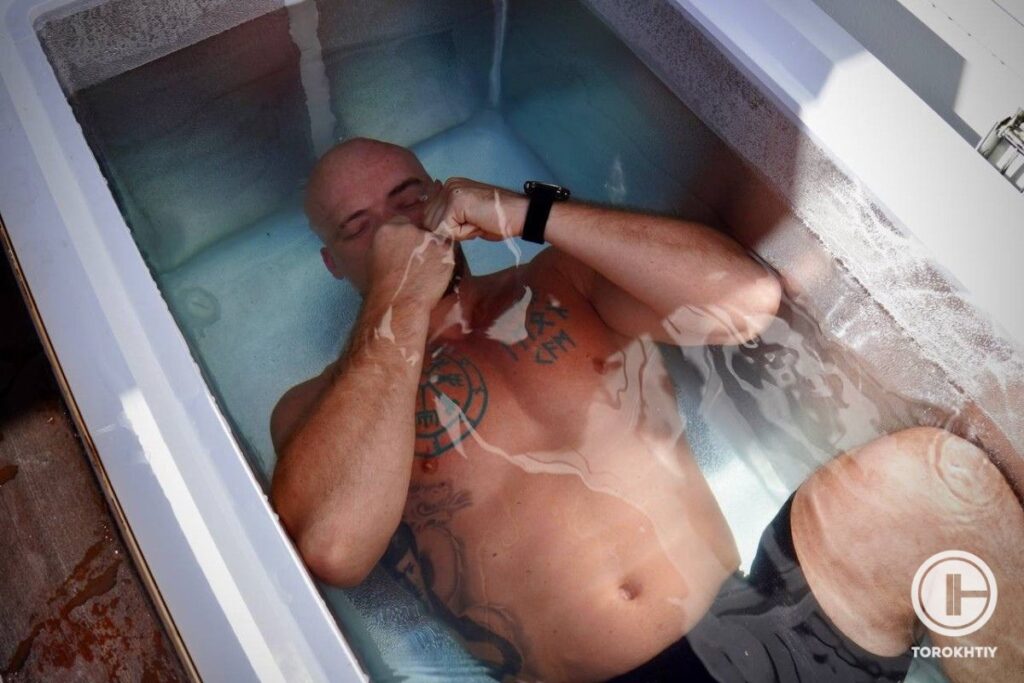
6 Tips to Start Ice Bathing
Ice baths can be intimidating for beginners, although if you are one of them, you’re probably both scared and excited to start because you’re familiar with the benefits. In this section, we’ll go over the tips and tricks that are very useful for beginners and that can help maximize the benefits and minimize the risks.
1. Gradual Temperature Progression
Do not jump into a tub of ice right away, especially if you’re one of those people that like their showers to be borderline scalding. Start with lukewarm water and allow your body to acclimate.
Another benefit of this gradual approach is that you won’t be as shocked by cold water once you get to that stage, and the experience of ice bathing will be more manageable.
2. Choosing the Right Protocol
An ice bath usually lasts anywhere from 1 minute, all the way to 60 minutes. This depends on the type of exposure you choose and water temperature. Brief exposure can last from 1-3 minutes, while long exposures may last from 30-60 minutes. Basically the colder the water is, the less time you can spend inside.
3. Focus On Breathing
Focus on controlled, steady breathing without panic. It will help you manage the initial shock of cold water, but it will also promote relaxation. Of course, you shouldn’t expect to be too relaxed there, but proper exhaling will surely help.
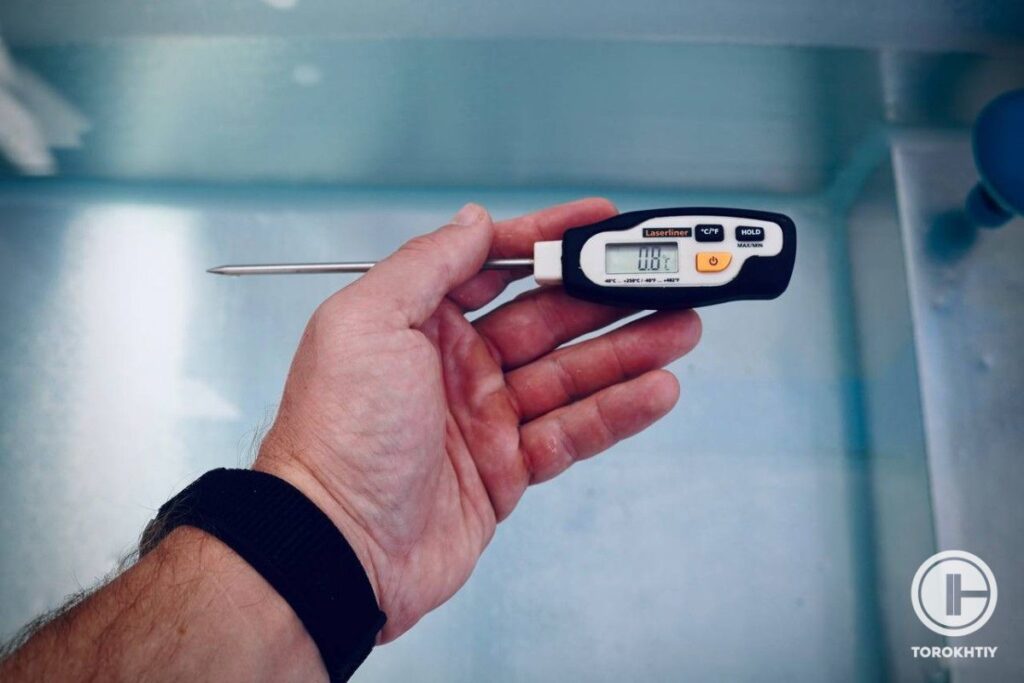
4. Active Movement
Active movement will depend on the ice bath exposure protocol (brief/long) you choose. During brief dips, movement can make the ice bath more challenging (amazing for people who require more stimulus).
When it comes to long dips, even something like swimming in a lake during fall/winter can be beneficial (just ensure the temperature is right, around 15°C ). But to be honest in most cases with ice baths you won’t be able to move a lot inside, often, a small container…
5. Be Careful with the Amount of Ice
It can be tempting to add a huge amount of ice into your bath, but it’s very important to use it moderately and not go crazy. Add ice little by little so that the temperature is challenging, but still manageable.
Extreme discomfort won’t do anything good, and you may even end up with cold-related injuries. The great idea is to start with a temperature that is cold enough for you to want to get out – but manageable enough so you can stay in.
6. Warm Up After
The best idea is to let your body heat itself after an ice bath without any help via thermoregulation (of course, that can depend on the environment). Get out, dry yourself (or not), breathe and shiver! Once you stop shivering, finish it. Walking and some light movement are both fine.
Cold Therapy Tool We Recommend for Ice Bathing
You can fill your tub with ice and enjoy a cold bath that way, but an ice barrel is a better way to do it. This sleek, fully insulated barrel is easy to use, and it has a seat inside.
The barrel has polyurethane foam to keep it insulated in all weather conditions; it keeps its temperature really well. The lid is UV resistant, and the color doesn’t fade even if you use the barrel outside.
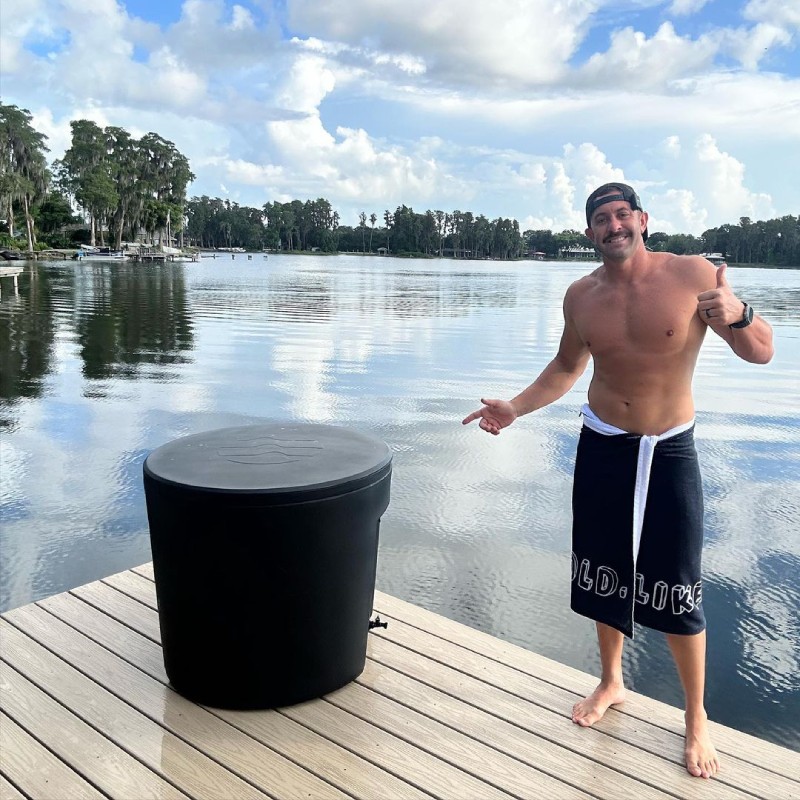
It’s made in the USA, which is always a plus, and it weighs only 61 lbs (empty). When you fill it up, the weight goes up to 700 lbs, and the water capacity is 77 gallons.
You also get a limited lifetime warranty, which is rare to find with ice barrels. If you want a perfect way to enjoy an ice bath, this barrel will do just that, and it won’t cost you as much as some others would.
Positives:
Could be better:
FAQ
Should You Ice Bathe Before or After a Workout?
The answer will depend on your goals. Going for an ice bath before a workout could be beneficial if you’re doing the workout in hot conditions or have multiple bouts in a day.
By ice bathing right after a workout, you might be impeding the body’s natural adaptation process (some people might be looking for this because of their specific recovery needs). Can’t go bad basically by getting one in the morning.
When Should I Take My Ice Bath?
The best time to cold plunge is in the morning (dopamine boost and extra focus) or if you can’t in the morning, 4-6 hours after workout (just make sure it’s not within the first 4 hours after it). Immediate pre-workout ice baths should be treated with caution.
Can You Ice Bathe Anytime?
Ice baths are generally flexible, but you shouldn’t take them immediately before a workout or within the first 4 hours after it. Cold therapy is great, but it can’t replace your body’s natural processes, and it shouldn’t – it should be used only to complement recovery.
Conclusion
Are you ready to shiver, but in a good way? You probably are because you know there’s a ton of benefits to it, the proper way to start, and when to cold plunge. If you don’t have an ice barrel yet, give Ice Barrel 300 a try and you won’t be disappointed.
What do you have to say about this cold, icy topic? Do you ice bathe or are you just looking for a way to start? If you have experience with this, what benefits have you seen, and why do you keep ice bathing? Do you prefer to take your ice bath in the morning or at night?
Let’s discuss this further and help each other out. Freezing out!
Also read:
- How to Cold Plunge at Home
- How to Keep Ice Bath Water Clean
- Ice Bath vs Hot Bath
- Cryotherapy vs Ice Bath
- Cold Shower vs Ice Bath
- Do Ice Baths Burn Fat
- Ice Bath Before or After Workout
- How Cold Should a Cold Plunge Be
- Best Cold Plunge Tank
References:
- Didrik Espeland, Louis de Weerd, and James B. Mercer “Health effects of voluntary exposure to cold water – a continuing subject of debate,” International Journal of Circumpolar Health 81, no. 1 (2022).
- Laura Williamson “You’re not a polar bear: The plunge into cold water comes with risks,” American Heart Association News, https://www.heart.org/en/news /2022/12/09/youre-not-a-polar-bear-the-plunge-into-cold-water-comes-with-risks (accessed January 19th, 2024)
- Maria Dyah Kurniasari, Karen A. Monsen, Shuen Fu Weng, Chyn Yng Yang, Hsiu Ting Tsai “Cold Water Immersion Directly and Mediated by Alleviated Pain to Promote Quality of Life in Indonesian with Gout Arthritis: A Community-based Randomized Controlled Trial,” Biological Research for Nursing 24, no. 2 (April 2022): 245-258.
- “Brrr! What To Know About Cold Plunges,” Cleveland Clinic, https://health.clevelandclinic.org/what-to-know-about-cold-plunges (accessed January 19th, 2024)
- Nikolai A. Shevchuk, “Adapted cold shower as a potential treatment for depression,” Medical Hypotheses 70, no. 5 (2008): 995-1001.
- Yoon-Hyung Lee, Jin-Ho Yoon, Ki-Jae Song, Jae-Keun Oh, “Effects of Cool-Down Exercise and Cold-Water Immersion Therapy on Basic Fitness and Sport-Specific Skills among Korean College Soccer Players,” Iranian Journal of Public Health 50, no. 11 (November 2021): 2211-2218.
- Paul R Jones, Christian Barton, Dylan Morrissey, Nicola Maffulli, Stephanie Hemmings, ‘Pre-cooling for endurance exercise performance in the heat: a systematic review’, BMC Medicine, vol. 10, Article no. 166, December 18, 2012, https://bmcmedicine.biomedcentral.com /articles/10.1186/1741-7015-10-166 (accessed January 29th, 2024)
Why Trust Us?
With over 20 years in Olympic Weightlifting, our team does its best to provide the audience with ultimate support and meet the needs and requirements of advanced athletes and professional lifters, as well as people who strive to open new opportunities and develop their physical capabilities with us.
By trusting the recommendations of our certified experts in coaching, nutrition, dietology, and sports training programming, as well as scientific consultants, and physiotherapists, we provide you with thorough, well-considered, and scientifically proven content. All the information given in the articles concerning workout programming, separate exercises, and athletic performance, in general, is based on verified data. We ensure that you can rely on our professionals’ pieces of advice and recommendations that can be treated as personalized ones which will benefit you and fully meet your needs.
The product testing process is described in more detail here
Author: Jacek Szymanowski
Certified Nutritionist,
M.Sc.Eng. Biotechnology
Performance Architect,
Strength and Conditioning Specialist
With over 30 years of fighting experience, specialization in nutrition coaching for athletes, and expertise in metabolic health and dietary strategies, Jacek offers a comprehensive approach to optimizing your performance and well-being. Backed by a Master of Science degree in Biotechnology, Jacek remains at the forefront of scientific advancements, ensuring that his coaching is always evidence-based and up-to-date.

